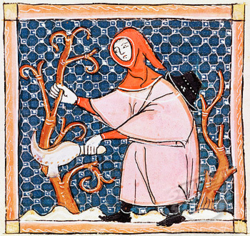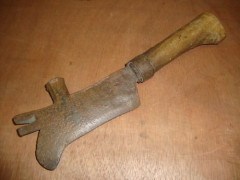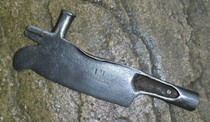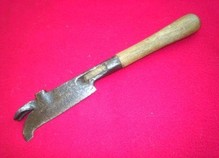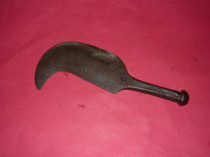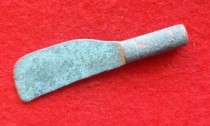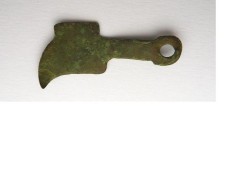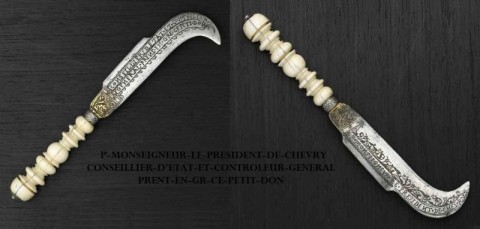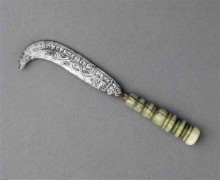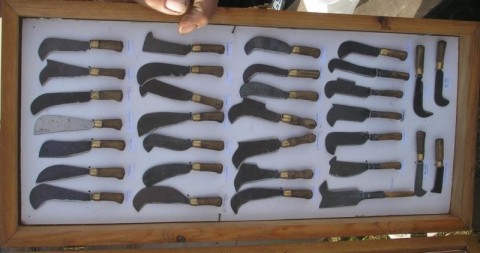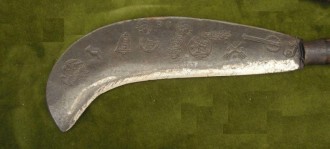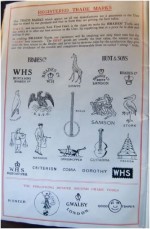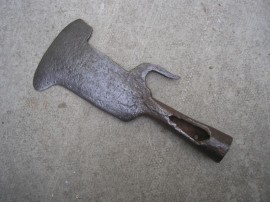The uncommon and the unusual.....
There are many curiousities with respect to billhooks, either because of their usage or mis-usage, or because the blade is an unusual shape, or size or because the handle is unusual - or any combination of these
A tiny (50mm) bronze 'serpe' found by metal detection in northern France. The shape, with a straight cutting edge, is typical of those from northern France, Belgium and Holland. It is also similar to the 'serpe à betterave' i.e. beet knives from the same region. Age is unknown, but it is possible that it is a Roman period votive offering.
A 17th century ivory handled engraved presentation billhook, or 'serpette' ,presented to Charles Duret (1564 to 1636), Seigneur de Chevry and the President of the Treasury of France (possibly originally gold plated using a mercury amalgam).
© Ecouen, musée national de la Renaissance.
This billhook was seen on the TATHS stand at the Great Dorset Steam Fair in 2011. It bears over ten stamps, and partial stamps - and appears to have no recognisable maker's mark.
A little research discovered some trade marks of the Eagle Edge Tool Company, which was incorporated into the firm of William Edwards & Son (established 1828) who in turn was bought out by Brades at the turn of the 20th century.. (see S&J Family Tree)
A Brades export catalogue shows the banjo and the EETC logos, plus several others.
However the billhook blade has more trademarks than those shown in the Brades catalogue - perhaps someone did on a scrap billhook blade what I did on an aluminium sheet at Morris' in Dunsford all those years ago, and stamped all the old punches found in an old box under the bench...
The billhook bearing the stamps is a military pattern with a thickened nose. These were made to government contracts by all the major manufacturers, including Brades. Most of these are stamped with a date stamp from the periods 1914 to 1918 and 1939 to 1944, i.e during the two World Wars. Thus they are nearly all made in the 20th century, post William Hunt (Brades)'s acquisition of William Edwards & Son. We thus appear to have have some hitherto unknown Brades' stamps that require further research.....
Unfortunately I could only take pictures with a hand held digital camera, and despite the reasonable quality, some marks are unrecognisable. Studio photography, with better lighting, may render some marks more legible....
If anyone recognises any of the other marks, please let me know.
A socketed pruning chisel, unusual in that it also has a billhook blade. Acquired in the UK in May 2012, it may be a French 'coupe-gui'. Used with a long handle it can be used to prune off unwanted side branches, or remove the infestation of mistletoe from fruit trees. The hook is used to pull down the prunings if they get caught in the tree.
